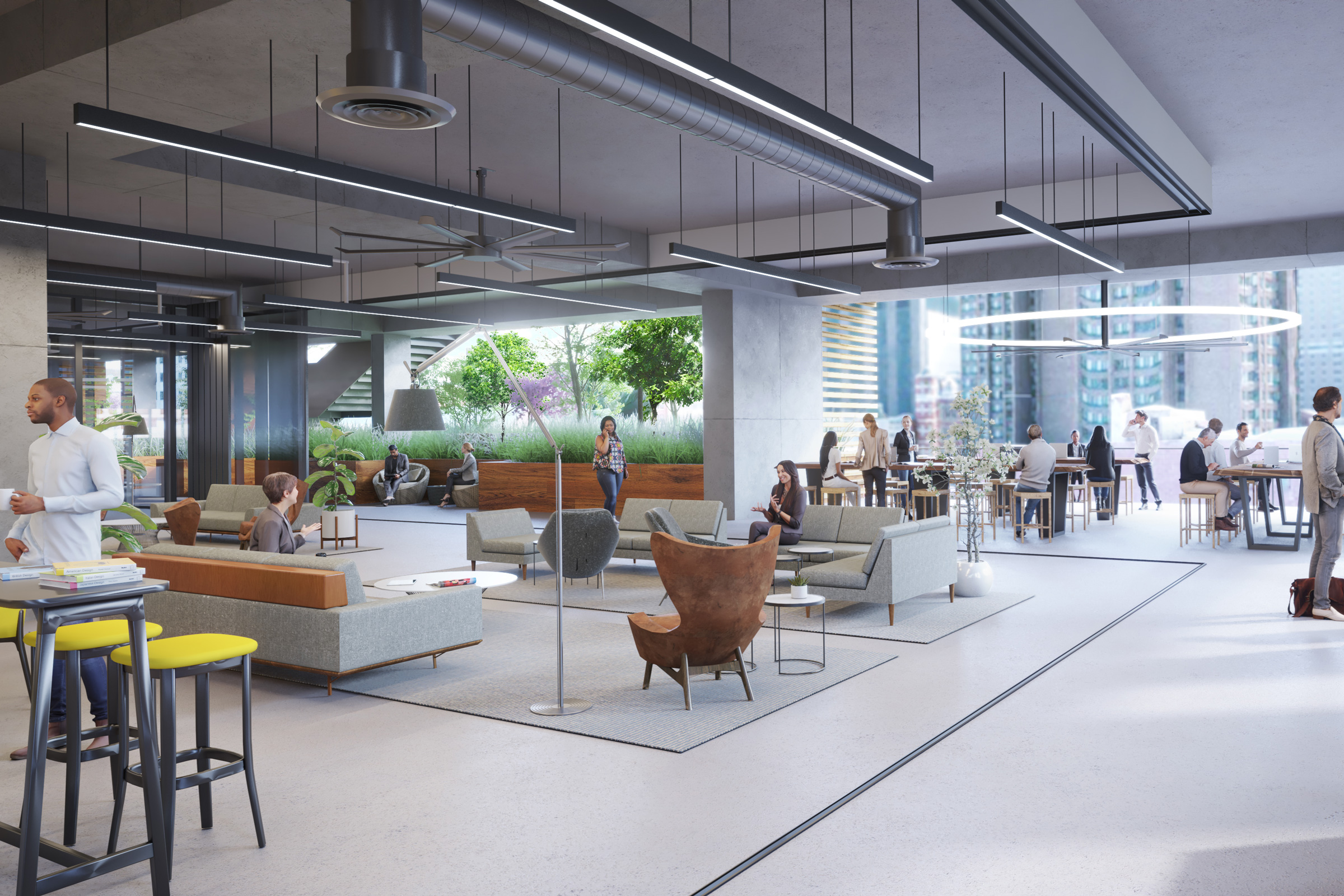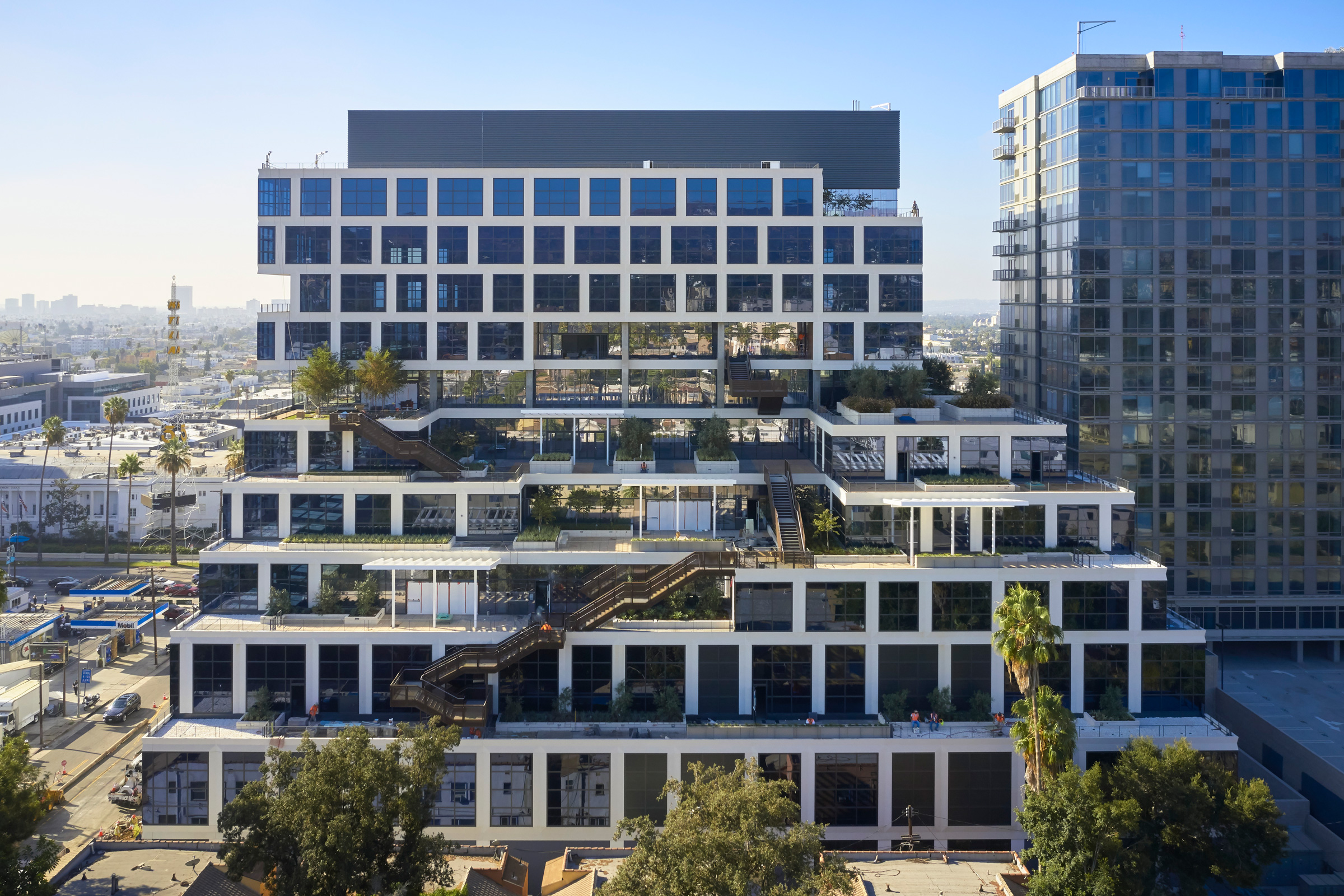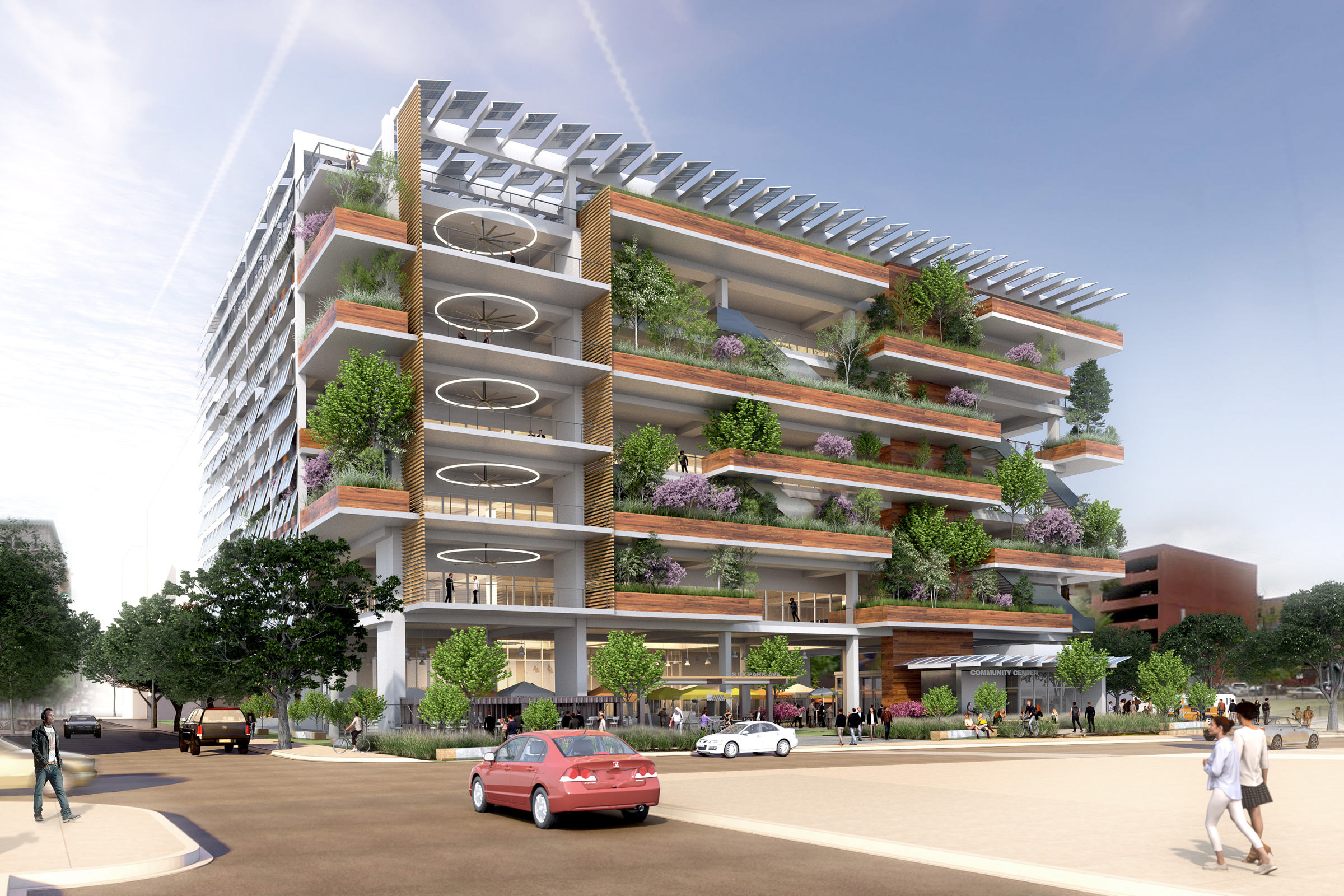Story at a glance:
- A hypothetical research project from Gensler looks at the future office through an ESG lens, addressing social and resilience issues.
- The Morphable Office includes a facade made almost entirely of sliding glass doors, connecting employees to the outdoors.
- The new Gensler proposal uses a community in Baltimore to measure its outcomes.
There’s been a lot of talk about changing workplace design lately. But what if instead of simply designing to contain as many people as possible, as so many office buildings do, architects designed to offer as much quality as possible?
It’s an idea that came from a virtual retreat Gensler held during the pandemic, where they asked, “What are we going to do to get people back to the office?”
Gensler wanted to be more aspirational, according to Darrel Fullbright, principal and design director for Gensler San Diego. “Traditionally the office building has been like a container for people,” he says. “Real estate has been about maximizing the amount of people you can get in that container.”
Fullbright says office design over the years has evolved from hard wall offices to the open office concept to having even more open offices with benching. It was all about getting more people into a space. “With the pandemic we realized maybe that’s really not the measure we should be going after; it should be the quality of space.” They thought: How can they design offices to be more about the experience of being there?
The Proposal

Image courtesy of Gensler
Gensler’s proposal looks at four impacts of the future office—designing meaningful experiences for workers, ensuring connections to the outdoors, building community, and emphasizing wealth building initiatives, or designing to mitigate economic displacement as a result of project development.
“We believe work from home will continue as a part of a hybrid work model, so the office no longer needs to be a container for people who can do focused work anywhere,” the proposal states. “We know that culture, creativity, and innovation need in-person interaction. Thus the office must focus on connection and collaboration, fostering long-lasting, memorable experiences.”
The proposal also emphasizes health and wellness, as the pandemic has re-focused society on these issues like never before. Gensler wants to design buildings to be much healthier. “We came to the conclusion that we’re re-creating this hermetically sealed box, and then we’re basically trying to engineer the hell out of it to make it efficient,” Fullbright says. “The reality is buildings are not really inherently sustainable, nor are they healthy. That’s how we came up with this idea … to really start to peel away more of the facade of the office to make buildings both healthier and more sustainable.”
Studies show that we’re at our most creative when we are outside, moving and mildly distracted by a physical activity. As such, Gensler’s Morphable Office concept designs an office with a facade made almost entirely of sliding glass doors. “We’ve been doing a lot of multi-slide doors, where there might be four or five operable panels. The idea is that you would make almost the entire facade that way so you could open the facade in all kinds of different ways,” Fullbright says.
Baltimore
Gensler chose Baltimore as a test site for their Morphable Office concept in part because they wanted a site that wasn’t sunny year-round, and in part to work with a community in need.
Near the city’s Central Business District, Gensler found both that office buildings were not a strong part of the community and ground floor retail was struggling, so they chose a site there for their hypothetical solution. “Our proposal is to literally lift up the ground floor, hold the building back, and return space to the public in the form of a public park,” Fullbright says. He says that former ground floor space could then act more like a festival space or be used for a farmers’ market to benefit local businesses on shorter terms, rather than businesses having to commit to three- or five-year leases. The design would also allow them to open up upper floors to more natural light and ventilation.
As part of the project Gensler wants to evaluate the impact of outdoor space versus indoor space and measure employee retention, thermal comfort, and productivity.
The Great Outdoors

In the hypothetical Baltimore design, perimeter terraces facilitate work as a journey. Image courtesy of Gensler
While certain things can be done better from home, like focused work, Fullbright says there’s no replacing the collaboration and sense of culture you get from going into work. That said, traditionally people had to be in the office, so the office didn’t have to be as compelling. But now, with so many different types of work, companies have to get creative. “What we wanted to do was find a compelling reason to get back to the office,” he says.
One of Fullbright’s favorite parts about working from home is being able to take calls from his backyard. He thinks having that experience of nature at work can be game-changing for companies.
Gensler is challenging architects to design for more mobile space in general as well as outdoor space that’s highly usable—beyond just balconies or patios. In this proposal they’re pushing the boundaries of mechanical systems to make sure outdoor space is highly functional, with heaters, pulldown screens, fans, and radiant heating and cooling. “Those are the kinds of things that make this outdoor space much more usable, so you can actually work outside as opposed to just having a patio where you go to have a conversation,” Fullbright says.

Gensler’s exterior design of the EPIC project in Hollywood features many principles of the firm’s Morphable Office concept, including usable terraces on every floor. Photo by Makena Hudson
For many years traditional office design has been centered around the high-rise, where the top floors are the most valuable, Fullbright says. But that’s changing. “We’re starting to find that the ground floor—where you can better connect to the outdoors—is really a better, more desirable space. For this project we asked: what if every floor could have the same qualities of the traditional ground floor?”
In Gensler’s Morphable Office, no matter what floor you’re on, you can step outside onto a garden terrace. “That’s something we’re seeing definitely take off,” he says. “A lot of these tech companies are wanting to have that biophilia and that fresh air and wellness feature.”




